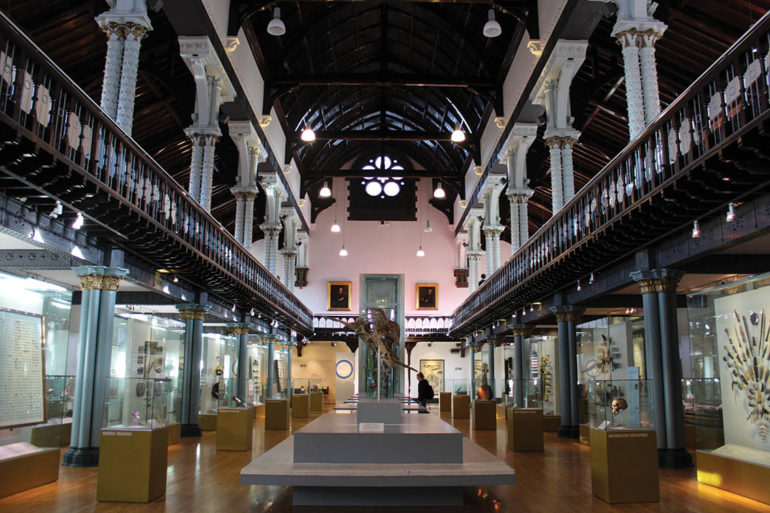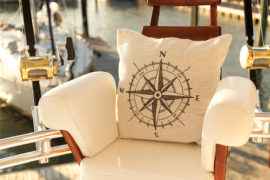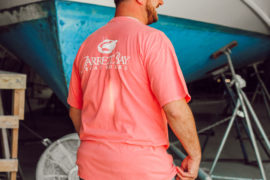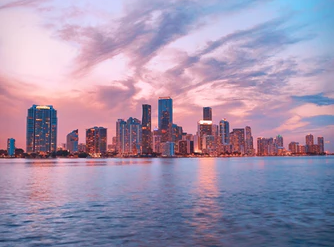By Amber France
Pressing my face to the tiny airplane window, I strained to catch a few final glimpses of the beautiful country we had spent the last ten days exploring. We had dreamed of visiting Scotland for many years and it was hard to believe it had come to an end. The trip was a long time in the making – something my father, sister, and I had talked about doing for well over a decade. Our tour took us on a whirlwind journey through the United Kingdom’s northernmost country. We covered a lot of ground and the time we spent in each location left us enthralled and longing for more.
Our adventure began in Edinburgh, Scotland’s capital city. We arrived at the Raeburn, a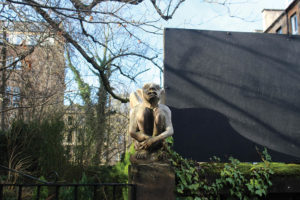 former Georgian mansion from 1832 that has been converted into a luxury boutique hotel. The lively bar downstairs was buzzing with activity. I also noticed a snug little library, which was furnished with mahoganycolored tufted leather couches and chairs upholstered in traditional Scottish tartan plaids. I sunk into one of the couches and admired the fireplace and the carved oak bookcases that flanked all four walls. One of the bookcases appeared to be slightly out of alignment. I pushed and it creaked open, revealing a hidden hallway. The discovery of the hidden passageway was the first of many memorable moments we experienced during the trip.
former Georgian mansion from 1832 that has been converted into a luxury boutique hotel. The lively bar downstairs was buzzing with activity. I also noticed a snug little library, which was furnished with mahoganycolored tufted leather couches and chairs upholstered in traditional Scottish tartan plaids. I sunk into one of the couches and admired the fireplace and the carved oak bookcases that flanked all four walls. One of the bookcases appeared to be slightly out of alignment. I pushed and it creaked open, revealing a hidden hallway. The discovery of the hidden passageway was the first of many memorable moments we experienced during the trip.
We headed out for dinner to what I would discover would be my favorite restaurant during our time in Scotland. The Kitchin is a gem housed in a converted former whisky warehouse on the Leith waterfront. The beautifully appointed restaurant deserves every accolade it has received. A warm, knowledgeable, attentive and kilted staff treated us to an exceptional dining experience. The restaurant uses local seasonal British ingredients prepared with French cooking techniques. Standouts included the house-made sourdough bread flavored with French olive oil, and impossibly rich soups garnished with edible flowers. At the end of the meal, the server presented us with a small map of Scotland that listed the locations where the menu’s ingredients had either been grown or caught.
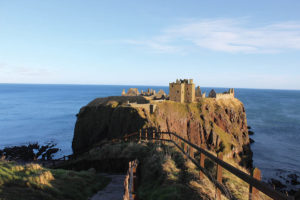 We started the next morning off by touring Edinburgh’s fairytale castle at the top of the Royal Mile. The castle looms large over the city atop Castle Rock. Edinburgh Castle served as a home for Scottish kings and queens for centuries. It is comprised of a number of structures with a dizzying and remarkable history. Mary Queen of Scots gave birth to James VI in the royal palace in 1566. Oliver Cromwell seized the castle in 1650. The castle has been the site of numerous sieges and conflicts over the centuries which has led some to call it “the most besieged place in Great Britain.” The Stone of Destiny, the sacred seat Scottish royals were enthroned on for centuries, and the Scottish regalia (better known as the Honours of Scotland) are displayed in the Crown Room. Many of the castle’s medieval buildings were destroyed during the 1600s. Luckily St. Margaret’s Chapel, constructed during the 12th century, was spared and today survives as Edinburgh’s oldest building. The medieval chapel was built as a shrine to the Scottish queen who died of a broken heart at Edinburgh Castle in 1093, a few days after learning of her husband’s death in battle.
We started the next morning off by touring Edinburgh’s fairytale castle at the top of the Royal Mile. The castle looms large over the city atop Castle Rock. Edinburgh Castle served as a home for Scottish kings and queens for centuries. It is comprised of a number of structures with a dizzying and remarkable history. Mary Queen of Scots gave birth to James VI in the royal palace in 1566. Oliver Cromwell seized the castle in 1650. The castle has been the site of numerous sieges and conflicts over the centuries which has led some to call it “the most besieged place in Great Britain.” The Stone of Destiny, the sacred seat Scottish royals were enthroned on for centuries, and the Scottish regalia (better known as the Honours of Scotland) are displayed in the Crown Room. Many of the castle’s medieval buildings were destroyed during the 1600s. Luckily St. Margaret’s Chapel, constructed during the 12th century, was spared and today survives as Edinburgh’s oldest building. The medieval chapel was built as a shrine to the Scottish queen who died of a broken heart at Edinburgh Castle in 1093, a few days after learning of her husband’s death in battle.
The castle grounds offer other poignant tributes to the deceased including the Scottish National War Memorial. The monument pays tribute to Scottish citizens and animals who have given their lives in the service of their country from WWI until today. We strolled down the Royal Mile, which links Edinburgh’s two most well-known landmarks, Edinburgh Castle and Holyrood Palace, peering in the windows of custom kilt makers and wool shops. Deacon Brodie’s Tavern was a delightful spot to stop for lunch. Deacon Brodie was Robert Louis Stevenson’s real life inspiration for “Dr. Jekyll and Mr. Hyde.” Brodie was a well-respected businessman by day and a depraved criminal by night. We decided next to check out St. Gile’s Cathedral and the Thistle Chapel. The chapel is located in the far right corner of the structure, and I was stunned by its breathtaking craftsmanship. The ceiling is covered in intricately carved stone thistles. Further along the Royal Mile was Cadenhead’s, an exceptional whisky stop. Doubling as a tasting room and a shop, Cadenhead’s opened their doors 175 years ago and is Scotland’s oldest independent bottler. The helpful staff allowed us to sample several whiskies before we settled on some lovely bottles from Islay.
Tickets in hand, we boarded a train bound for Aberdeen the following morning. As luck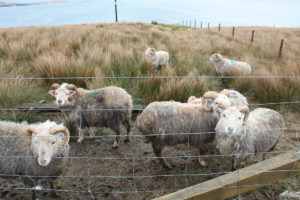 would have it, we chose the side of the train with views of the North Sea. We enjoyed several hours’ worth of glimpses of quaint seaside towns, desolate beaches, and scenes of sheep and cows grazing. The constant background to all of these idyllic locales was the turbulent North Sea, adding a dash of drama to the otherwise pastoral settings. When we arrived in Aberdeen, we rented a car to make the three hour drive to Aberlour. We made only one stop on our journey to a castle known as “Slains” in Aberdeenshire, which today, is roofless and in ruins. Its storied past also includes being Bram Stoker’s alleged inspiration for Dracula’s Castle. When the castle came into view I ran to it as quickly as I could, positioning myself as perilously close to the side of a cliff as was possible. Waves from the North Sea smashed against the craggy rocks hundreds of feet below. The castle still looked quite proud. My father, sister, and I explored the inside of the castle and saw steps leading down to mysterious underground lairs, their bottoms completely shrouded in darkness. As we walked back to our car, I turned to look at Slains one more time. The night sky had turned violet and a full moon shone down upon the ruins. Even though our time at Slains had been brief, it was one of the most eerily picturesque moments I’ve ever experienced.
would have it, we chose the side of the train with views of the North Sea. We enjoyed several hours’ worth of glimpses of quaint seaside towns, desolate beaches, and scenes of sheep and cows grazing. The constant background to all of these idyllic locales was the turbulent North Sea, adding a dash of drama to the otherwise pastoral settings. When we arrived in Aberdeen, we rented a car to make the three hour drive to Aberlour. We made only one stop on our journey to a castle known as “Slains” in Aberdeenshire, which today, is roofless and in ruins. Its storied past also includes being Bram Stoker’s alleged inspiration for Dracula’s Castle. When the castle came into view I ran to it as quickly as I could, positioning myself as perilously close to the side of a cliff as was possible. Waves from the North Sea smashed against the craggy rocks hundreds of feet below. The castle still looked quite proud. My father, sister, and I explored the inside of the castle and saw steps leading down to mysterious underground lairs, their bottoms completely shrouded in darkness. As we walked back to our car, I turned to look at Slains one more time. The night sky had turned violet and a full moon shone down upon the ruins. Even though our time at Slains had been brief, it was one of the most eerily picturesque moments I’ve ever experienced.
Glenfiddich is one of Scotland’s most renowned and beloved whisky distilleries, and is located in Dufftown. The distillery is just off a winding country road and is comprised of a number of picturesque ivy draped buildings, many of which date to the 1800s. The distillery was founded in 1886 by William Grant, who ran the distillery with his children. The family eventually formed a company called William Grant & Sons and today, the fifth generation of William Grant’s descendants are at the helm of the company. Their products are enormously popular and heavily awarded. Glenfiddich is currently the world’s bestselling single malt whisky. Our tour guide, Graham, explained that a key ingredient that gives Glenfiddich an edge over its competitors is the pure spring water sourced from the famous Robbie Dhu Springs near the distillery. He brought us into several dark musty aging rooms filled with hundreds of whisky barrels, and reverently guided us to where some of the oldest barrels in the collection were resting. At the end of the tour, Graham took us to a whisky laboratory and allowed each of us to concoct and bottle our own unique blend of whisky which he labeled and sealed for us.
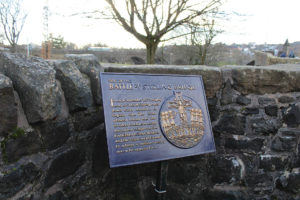 Dunnottar Castle was the next destination on our Highlands itinerary. Like Slains, Dunnottar is dramatically located above the North Sea. The castle sits atop a rocky headland and many of its surviving buildings were constructed in the 15th and 16th centuries. Dunnottar has played a significant role throughout Scottish history. Most notably, the Honours of Scotland were hidden from Oliver Cromwell at Dunnottar Castle in the late 1600s. William Wallace is said to have captured Dunnottar from the English in 1297 during the Wars of Scottish Independence. To be able to explore such a stunning, historical structure was an absolute thrill. Staring out at the very same views of the Scottish coastline that men and women had gazed upon for centuries surrounded by the ruins of the legendary fortress electrified my imagination and made me feel linked to all the people long gone who had been there before me.
Dunnottar Castle was the next destination on our Highlands itinerary. Like Slains, Dunnottar is dramatically located above the North Sea. The castle sits atop a rocky headland and many of its surviving buildings were constructed in the 15th and 16th centuries. Dunnottar has played a significant role throughout Scottish history. Most notably, the Honours of Scotland were hidden from Oliver Cromwell at Dunnottar Castle in the late 1600s. William Wallace is said to have captured Dunnottar from the English in 1297 during the Wars of Scottish Independence. To be able to explore such a stunning, historical structure was an absolute thrill. Staring out at the very same views of the Scottish coastline that men and women had gazed upon for centuries surrounded by the ruins of the legendary fortress electrified my imagination and made me feel linked to all the people long gone who had been there before me.
Our adventure would next take us north to the Shetland Islands where we would take part in the annual Up Helly Aa Viking heritage fire festival, the largest fire festival in Europe, that occurs on the last Tuesday in January. Up Helly Aa is a twentyfour hour party that celebrates the end of the yule season and Shetland’s Viking past. The Jarl squad is the main crew that leads the festival, led by Guizer Jarl, who is the king of the festival, and his men. The Jarl squad is the only crew that dresses like Vikings. Many of the townspeople sported Viking helmets and bushy beards made out of yarn to get into the Up Helly Aa spirit. After much anticipation, the Jarl Squad marched into the square accompanied by numerous bagpipers. The spectacle was completed by the parading of the two custom Viking longships. The Jarl squad members posed for photographs by their ships and sang Viking songs. Post parade, we were told that the Jarl squad spends the day visiting orphanages and retirement homes to spread cheer to the people of the Mainland. One of our cab drivers had advised us to get to the burning site early to secure a good spot. The burning of the Viking longships now takes place in the center of the wall that overlooks the rectangular playing fields. We heard them before we saw them. The sounds intensified and we realized we were hearing a thousand men singing the Viking battle song in unison as they continued to make their way closer to us. The sky glowed orangish red above the houses several blocks away as torches were being lit just out of our view. A large band set up in the corner of the field to accompany the Vikings and the other squads as they continued to sing. When the thousand men had found their positions surrounding the Viking longship and all movement ceased, the Guizer Jarl took the microphone to say a few words. Wave after wave of squad 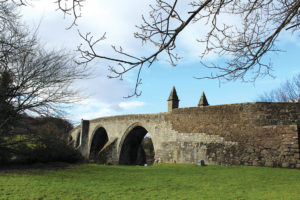 members then surrounded the wooden galley and tossed their torches onto the ship in glorious arcs of burning light. The airborne sticks of fire quickly set the ship ablaze. As the flames gobbled the galley, one could make out the silhouette of the dragon’s head intermittently before it was again obscured by the blinding conflagration. The burning was followed by a town wide celebration of dancing, food, and drink. The dining room in our hall served a steady stream of hot tea, coffee, hearty soups, finger sandwiches, and an assortment of scones and other sweets to fortify the party goers. While the halls do not officially serve alcohol, guests are welcome to bring whatever they would like to imbibe. Up Helly Aa is hands down the social event of the year for Shetlanders.
members then surrounded the wooden galley and tossed their torches onto the ship in glorious arcs of burning light. The airborne sticks of fire quickly set the ship ablaze. As the flames gobbled the galley, one could make out the silhouette of the dragon’s head intermittently before it was again obscured by the blinding conflagration. The burning was followed by a town wide celebration of dancing, food, and drink. The dining room in our hall served a steady stream of hot tea, coffee, hearty soups, finger sandwiches, and an assortment of scones and other sweets to fortify the party goers. While the halls do not officially serve alcohol, guests are welcome to bring whatever they would like to imbibe. Up Helly Aa is hands down the social event of the year for Shetlanders.
The following day, James Tait, owner of Island Trails Guided Tours, picked us up for our personal tour of the island. Over the next 8 hours, Mr. Tait took us on one of the most comprehensive and fascinating tours I have ever had the pleasure of experiencing. Mr. Tait took us to see Shetland sheep grazing on a hillside that sloped down to the edge of the North Sea. He also took us to see those adorable Shetland ponies! We pulled off to the side of the road so we could walk up to the fence at one of the horse farms. We descended the hill and walked along the beach until a surprise rain shower sent us running for the car.
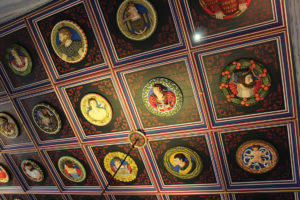 We stopped for lunch at the elegant Sumburgh Hotel, built in 1867, and then the Sumburgh Head Lighthouse, its museum and nature center. The Sumburgh Head Lighthouse was constructed in 1821 and it played a surprisingly significant but secret role during WWII. Unbeknownst to most Shetlanders, a covert radar operation was established on the lighthouse grounds in 1939 to monitor German activity in the North Sea. Radar operators at Sumburgh made what was perhaps their most significant contribution to the defense effort on April 8, 1940. Sub-Lieutenant George Clifford Evans was at his post at secret radar station when he detected 60 German Luftwaffe bombers en route to destroy the British Home Fleet, anchored in Scapa Flow in Orkney. Evans was able to provide the commanding officer with a 25 minute warning of the approaching danger, which allowed the British ample time to ready their defenses. The incident has been described as “the Pearl Harbor that might have been” as all major damage was averted. In addition to its fascinating WWII history, the lighthouse is home to numerous seabirds and plentiful aquatic life. The museum has extensive exhibits of all of the creatures that inhabit the cliffs and waters below the lighthouse.
We stopped for lunch at the elegant Sumburgh Hotel, built in 1867, and then the Sumburgh Head Lighthouse, its museum and nature center. The Sumburgh Head Lighthouse was constructed in 1821 and it played a surprisingly significant but secret role during WWII. Unbeknownst to most Shetlanders, a covert radar operation was established on the lighthouse grounds in 1939 to monitor German activity in the North Sea. Radar operators at Sumburgh made what was perhaps their most significant contribution to the defense effort on April 8, 1940. Sub-Lieutenant George Clifford Evans was at his post at secret radar station when he detected 60 German Luftwaffe bombers en route to destroy the British Home Fleet, anchored in Scapa Flow in Orkney. Evans was able to provide the commanding officer with a 25 minute warning of the approaching danger, which allowed the British ample time to ready their defenses. The incident has been described as “the Pearl Harbor that might have been” as all major damage was averted. In addition to its fascinating WWII history, the lighthouse is home to numerous seabirds and plentiful aquatic life. The museum has extensive exhibits of all of the creatures that inhabit the cliffs and waters below the lighthouse.
Our final stop was the Scalloway Museum, which houses an impressive assemblage of vintage souvenirs made of whale bone and body parts, an extensive WWII section, and a collection of oceanic memorabilia. Perhaps the most unusual display in the museum was an urn filled with red ashes, the alleged remains of a convicted witch. When we made our way to the museum’s exit to tour of the adjacent Scalloway Castle, we were informed that the castle was already closed and locked up for the night. James asked if he could give us a nighttime tour, and the friendly museum employee was happy to oblige. James unlocked the massive door and it opened into total darkness. We turned on our cellphone flashlights and descended the slippery, stone stairwell down into the tunnel vaulted basement. The Scalloway Castle is roofless, exposing occupants to the cold, dismal Scottish weather. The wind whistled and howled outside as the rain battered the stone fortress. When we bid farewell to the wild, windy Shetlands the following morning, we knew we had much to look forward to in Glasgow.
Glasgow turned out to be one of our favorite stops on our Scottish adventure. With its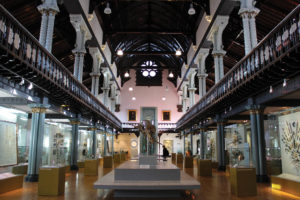 gritty vibe and industrial shipbuilding history, Glasgow possesses an undeniable charm. The vibrant and modern city boasts exquisite Victorian architecture and wide, tree lined streets. We dropped off our suitcases at Hotel du Vin at One Devonshire Gardens. The hotel is comprised of five former Victorian townhouses that have been turned into one gorgeous 49 room boutique hotel, fit with enormous stained glass windows, cloudlike beds and antique clawfoot bathtubs. Soon as we were settled, and after a stop at the Hunterian museum, we set off for afternoon tea.
gritty vibe and industrial shipbuilding history, Glasgow possesses an undeniable charm. The vibrant and modern city boasts exquisite Victorian architecture and wide, tree lined streets. We dropped off our suitcases at Hotel du Vin at One Devonshire Gardens. The hotel is comprised of five former Victorian townhouses that have been turned into one gorgeous 49 room boutique hotel, fit with enormous stained glass windows, cloudlike beds and antique clawfoot bathtubs. Soon as we were settled, and after a stop at the Hunterian museum, we set off for afternoon tea.
One cannot visit Great Britain without taking time to experience the great British tradition of sipping afternoon tea. The Willow Tea Rooms provide the ideal surroundings for enjoying tea, finger sandwiches, soups, and a few sweets from the extensive dessert menu. We took our tea and lunch in the White Dining Room, a bright sunlit space furnished with high-backed chairs and brilliant leaded glass windows. The beautifully presented lunch delighted us and the hot, flavorful teas brought the color back to our cheeks. Refreshed from our divine dining experience at the Willow Tea Rooms, we hopped on a red double decker bus for a tour of Glasgow. We learned that Glasgow was founded by a Scotsman named Mungo who is also the city’s patron saint. The most beautiful structure we saw on the tour was a former carpet factory. Templeton Carpet Factory is a jewel box of a building that was modeled after the Doge’s Palace in Venice. The elaborate facade is comprised of glazed brick, enamel tile, terra-cotta, and red brick evoking the luxurious and exotic beauty of the carpets that were once manufactured inside. During its heyday, the Templeton serviced a number of illustrious clients and, most notably, crafted all of the Titanic’s carpets. When we finished with the tour, we popped into the Pot Still, considered by many to be one of the best whisky bars in the world. The Pot Still boasts over 700 whiskies and its vibe is warm and welcoming. We quickly struck up a conversation with bar regular Stephen who confided in us that he is on a mission to taste all 700 whiskies before he dies. We then left for dinner at the Ubiquitous Chip, one of Glasgow’s most well-known and beloved restaurants. The Ubiquitous Chip is located just off one of the charming Victorian cobblestone mews in the West End, Glasgow’s bohemian neighborhood. We were seated in the main dining area, a large inviting courtyard dripping with vines, and enjoyed a delightful dinner sourced from local Scottish ingredients.
 We were picked up early the following morning by tour guide George Martin to embark on our final Scottish adventure: a William Wallace tour. “Braveheart” and our father’s admiration for the William Wallace story had been the original catalyst for the trip to Scotland. Mr. Martin took the backroads to ensure that the journey was scenic as he regaled us with stories of William Wallace’s heroics. The first stop was Stirling Castle, a magnificent collection of buildings mostly dating from the 15th and 16th centuries. Many prominent kings and queens have been crowned at Stirling, including Mary, Queen of Scots. We walked its halls draped in vibrant tapestries decorated with unicorns and scenes of hunting parties. The castle’s most elaborate art is displayed on the ceiling in the King’s Chamber. This collection of 16th century carved oak medallions is known as the Stirling Heads and includes depictions of kings, queens, nobles, and biblical figures. At Stirling Castle, the Great Hall was the site of the grandest soirees. The Great Hall dates from 1503 and is the largest hall of its kind ever built in Scotland. We sat in the royal throne chairs and looked down at the long, empty room imagining the lively scenes of feasts and parties that had occurred in this space over the centuries. The site of one of Scotland’s most famous battles was the next destination on our tour: Stirling Bridge. The Battle of Stirling Bridge took place on September 11, 1297 during the First Scottish War for Independence. We walked across the current bridge which dates from the 1400s or 1500s and listened to Mr. Martin weave the tale of William Wallace’s military triumph. Despite being outnumbered, William Wallace defeated King Edward’s forces by outsmarting them and launching a surprise attack on the unsuspecting British as they filed across Stirling Bridge. The River Forth flowed at a steady clip beneath us and the bright sun illuminated the picturesque town around us. Abbey Craig, the site of William Wallace’s hilltop headquarters during the Battle of Stirling Bridge, was visible in the distance. In 1869, a 220-foot Victorian gothic tower was erected on top of the volcanic crag, to honor William Wallace. We made our way to the Wallace Monument and began ascending the 246-step spiral staircase. Mercifully, there were a few levels that offered exhibits to peruse. One of the floors displayed the impressive Wallace broadsword. When we finally reached the crown of the monument, we discovered it was an open air observation area offering sweeping views of the Ochil Hills and the Forth Valley below. We circled the crown
We were picked up early the following morning by tour guide George Martin to embark on our final Scottish adventure: a William Wallace tour. “Braveheart” and our father’s admiration for the William Wallace story had been the original catalyst for the trip to Scotland. Mr. Martin took the backroads to ensure that the journey was scenic as he regaled us with stories of William Wallace’s heroics. The first stop was Stirling Castle, a magnificent collection of buildings mostly dating from the 15th and 16th centuries. Many prominent kings and queens have been crowned at Stirling, including Mary, Queen of Scots. We walked its halls draped in vibrant tapestries decorated with unicorns and scenes of hunting parties. The castle’s most elaborate art is displayed on the ceiling in the King’s Chamber. This collection of 16th century carved oak medallions is known as the Stirling Heads and includes depictions of kings, queens, nobles, and biblical figures. At Stirling Castle, the Great Hall was the site of the grandest soirees. The Great Hall dates from 1503 and is the largest hall of its kind ever built in Scotland. We sat in the royal throne chairs and looked down at the long, empty room imagining the lively scenes of feasts and parties that had occurred in this space over the centuries. The site of one of Scotland’s most famous battles was the next destination on our tour: Stirling Bridge. The Battle of Stirling Bridge took place on September 11, 1297 during the First Scottish War for Independence. We walked across the current bridge which dates from the 1400s or 1500s and listened to Mr. Martin weave the tale of William Wallace’s military triumph. Despite being outnumbered, William Wallace defeated King Edward’s forces by outsmarting them and launching a surprise attack on the unsuspecting British as they filed across Stirling Bridge. The River Forth flowed at a steady clip beneath us and the bright sun illuminated the picturesque town around us. Abbey Craig, the site of William Wallace’s hilltop headquarters during the Battle of Stirling Bridge, was visible in the distance. In 1869, a 220-foot Victorian gothic tower was erected on top of the volcanic crag, to honor William Wallace. We made our way to the Wallace Monument and began ascending the 246-step spiral staircase. Mercifully, there were a few levels that offered exhibits to peruse. One of the floors displayed the impressive Wallace broadsword. When we finally reached the crown of the monument, we discovered it was an open air observation area offering sweeping views of the Ochil Hills and the Forth Valley below. We circled the crown 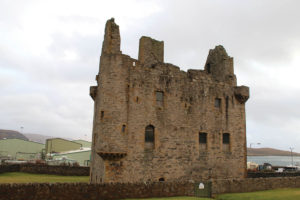 taking in the view of the terrain from William Wallace’s vantage point. The legendary Scotsman had plotted one of his greatest military victories from Abbey Craig and for a moment, we got to see it through his eyes.
taking in the view of the terrain from William Wallace’s vantage point. The legendary Scotsman had plotted one of his greatest military victories from Abbey Craig and for a moment, we got to see it through his eyes.
After the William Wallace tour wrapped up, Mr. Martin transported us to our final hotel of the trip. Throughout our Scottish adventure, we stayed in several lovely accommodations but we saved the most extraordinary for last. After visiting so many stunning castles during our exploration of the country, we decided to live like royals for a night by booking rooms in a castle hotel. Dalhousie Castle, once the seat of the Ramsay clan, is Scotland’s oldest inhabited castle. Dalhousie played a role in several of Scotland’s historic chapters. King Edward I, also known as Longshanks, stayed at Dalhousie en route to meet William Wallace at the Battle of Falkirk. Oliver Cromwell used the castle as a base during his Scottish invasions. Today, Dalhousie has been turned into a luxury boutique hotel with 29 individually furnished rooms. The outside of Dalhousie is picture perfect: a gleaming stone structure complete with towers, turrets, and a moat situated on 11 unspoiled acres next to the River Esk. The inside of the castle is equally as exquisite. Painted an eggshell blue hue and covered in gilded, fan shaped embellishments, the ceiling set the ornate tone of the castle’s interior. Heavily carved staircases, antique furniture, plush rugs, and dramatic lighting fixtures added to the opulent setting. When we entered the castle’s library for our pre-dinner canapés and whisky cocktails, we saw a bridal party, giddy with excitement. The warm clubby atmosphere of the library was in stark contrast to the castle’s restaurant, called the Dungeon. Not surprisingly, the Dungeon restaurant is housed in the castle’s former dungeon at the bottom of a stairwell that leads to a series of barrel vaulted stone rooms. Shiny suits of armor stand guard over diners and antique swords are splayed out in semi-circles on the walls. The Dungeon is an award-winning restaurant and we enjoyed a delectable, slightly unnerving meal, under the masked gazes of several knights. Retreating to our rooms, we sunk into luxurious, canopied fourposter beds; the perfect ending to our Scottish adventure.
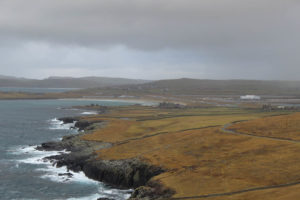 For a week and a half, we had trekked all over Scotland, exploring cities and small country towns. We celebrated Viking and Scottish heritage through festivals and cultural attractions. By making pilgrimages to historic castles, cemeteries, and battlegrounds, we connected with Scotland’s storied past and the legendary characters that shaped the country. We were charmed by the people we met and by the stunning natural beauty of the land and sea. Scotland’s windswept moors and crumbling ruins captured our hearts. Our magical Scottish adventure will not soon leave our minds and I am certain that we will return to discover more of what this winsome country is willing to reveal.
For a week and a half, we had trekked all over Scotland, exploring cities and small country towns. We celebrated Viking and Scottish heritage through festivals and cultural attractions. By making pilgrimages to historic castles, cemeteries, and battlegrounds, we connected with Scotland’s storied past and the legendary characters that shaped the country. We were charmed by the people we met and by the stunning natural beauty of the land and sea. Scotland’s windswept moors and crumbling ruins captured our hearts. Our magical Scottish adventure will not soon leave our minds and I am certain that we will return to discover more of what this winsome country is willing to reveal.

